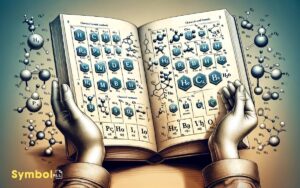A Letter or Symbol Used to Represent an Unknown: Explains!
In your journey to understand the unknown in mathematics, you’ll encounter letters or symbols representing variables or values yet to be determined. Initially, mathematicians relied on verbal descriptions before symbols emerged as a universal language.
These alphabetic or symbolic placeholders are critical for formulating equations and solving complex mathematical problems. Each character carries a specific significance indicating mathematical operations, making them indispensable in representing abstract concepts.
As you explore further, you’ll realize how the choice of symbol profoundly impacts the mathematical properties and how this evolved system leverages concise notation for efficient communication, laying the foundation for deeper insights into the cosmos of mathematics.

Key Takeaways
The Origins of Algebraic Symbols
The journey into the origins of algebraic symbols begins with the need to represent quantities that were unknown or variable.
This necessity arose as mathematical concepts evolved beyond simple counting and into the domains of trade, astronomy, and theoretical exploration.
Initially, mathematicians relied on verbal descriptions, but this method proved cumbersome and limited.
As a result, symbols started to emerge, serving as a universal language that could succinctly capture complex ideas. The shift wasn’t immediate; it involved a gradual move from words to visual representations.
Early symbols were often abstract, evolving over time into the concise notations you’re familiar with today. This evolution was methodical, driven by the desire for precision and efficiency in mathematical communication.
Each symbol’s adoption marked a significant advance in the ability to articulate and solve increasingly complex problems.
Deciphering the Alphabet in Math
As you delve into the field of mathematics, it becomes important to understand how each letter and symbol functions as a unique tool in solving intricate equations and representing abstract concepts.
In algebra, for instance, letters from the alphabet are used to signify unknown values or variables. These symbols serve as placeholders, allowing mathematicians to formulate equations that can solve a myriad of problems, from simple arithmetic to complex calculus.
It’s essential to grasp the significance of each character, as the choice of symbol can indicate specific mathematical operations or properties.
Symbols Beyond Mathematics
Understanding the alphabet in math opens your mind to the realization that symbols carry meaning beyond numerical values and equations.
They aren’t confined to mathematical contexts but permeate various facets of life and knowledge, symbolizing concepts and ideas that are fundamental to human understanding.
- Religious symbols: Represent beliefs and divine entities.
- Chemical symbols: Denote elements and compounds.
- Traffic signs: Communicate rules and warnings.
- Corporate logos: Symbolize brand identity and values.
- National flags: Convey a country’s history, culture, and ideals.
These symbols serve as a universal language, transcending verbal communication barriers. They encapsulate complex ideas in simple forms, facilitating quick recognition and understanding across diverse contexts.
This symbolic representation, rooted in the tradition of mathematical symbols, underscores the interconnectedness of knowledge domains.
The Impact on Scientific Discovery
Symbols in mathematics and beyond have profoundly influenced scientific discovery, enabling researchers to encapsulate complex ideas into manageable, universal concepts.
By employing symbols, you allow the essence of vast and intricate theories to be distilled into a form that’s not only more digestible but universally recognizable.
This methodological simplification has catalyzed advancements across disciplines. For instance, the symbol ‘E’ in Einstein’s equation \(E=mc^2\) distills an intricate relationship between energy, mass, and the speed of light into an elegant, universally understood formula.
This symbolic representation doesn’t just streamline communication among scientists; it also facilitates a deeper understanding of underlying principles, paving the way for further discoveries.
Symbols serve as the building blocks for the scaffolding upon which modern scientific exploration rests.
Future Directions in Symbolic Representation
Exploring future directions in symbolic representation, it’s important to identify how evolving technologies and interdisciplinary approaches will refine and redefine the symbols we use to navigate complex concepts.
As you dive deeper into this domain, consider the following pivotal areas:
- Integration of artificial intelligence for dynamic symbol generation
- Adoption of virtual and augmented reality for immersive learning experiences
- Harmonization of symbols across different scientific disciplines for universal understanding
- Development of interactive, adaptive symbols responsive to user input
- Exploration of quantum computing’s impact on symbolic complexity and processing speed
These advancements promise to revolutionize how we conceptualize and interact with the unknown, making it increasingly accessible and comprehensible. Your engagement and curiosity in these future directions will be instrumental in shaping the evolution of symbolic representation.
Conclusion
To sum up, you’ve navigated the evolution of algebraic symbols, uncovering their pivotal role beyond mathematics. Consider this: nearly 90% of modern scientific discoveries rely on these symbols for expression and communication.
This statistic isn’t just a number; it’s a validation of the profound influence symbolic representation has on our understanding of the world.
As you look toward the future, remember, the symbols you see today are the foundation for tomorrow’s innovations, demanding precision and methodical analysis at every turn.






